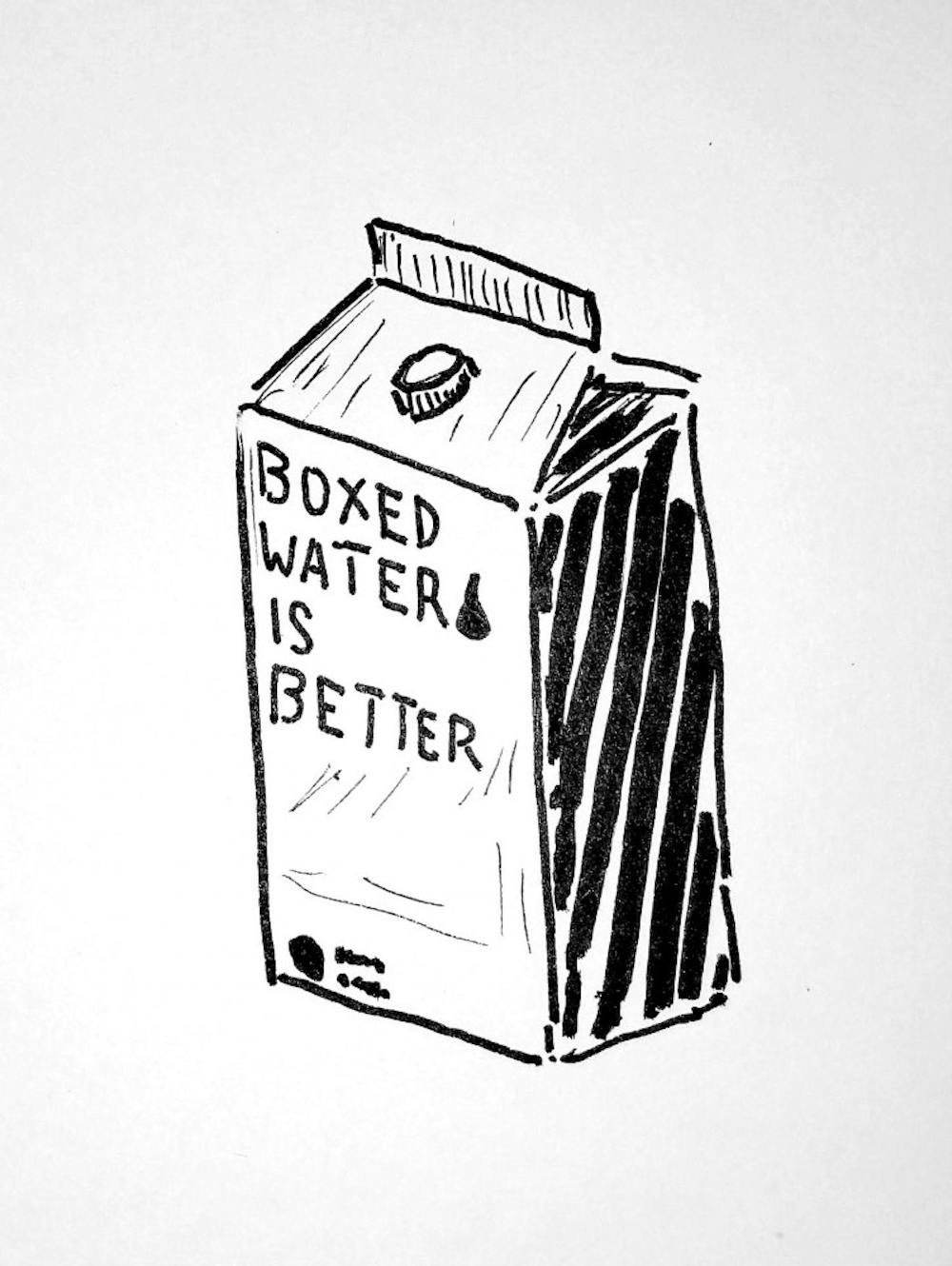Earlier this school year, in the spirit of sustainability, Campus Dining announced that Frist Campus Center would no longer carry plastic water bottles. Instead, it would opt for water in paper cartons — specifically the brand “Boxed Water Is Better.” At face value, it seems like an unprecedented and revolutionary change; one that combines both hipster style with environmental savvy. But the University’s switch to boxed water under the claim of sustainability distracts from the root problem: unreliable filtered water sources drive students away from using reusable water bottles and contribute to more environmental impact.
First, boxed water is only more environmentally responsible if it were the absolute only alternative to plastic bottles, on the account that the design of boxed water (rectangular prisms, as opposed to cylindrical shapes) allows for more efficient packing and thus reduced shipping costs. And one could argue that since the boxed water carton is made from 74 percent paper, it might have a smaller carbon footprint than plastic bottles. Though since the remaining 26 percent consists of plastic and aluminum, the material may be harder to recycle due to the fact that it’s less common and thus recycling facilities might be less available than those for just plastic.
But, in reality, boxed water is not the only alternative by far. The most environmentally-friendly choice is using a reusable water bottle. In fact, providing boxed water that has a perceived lower environmental cost may lead to the same or a larger effect as providing plastic bottles, rather than reducing environmental impact, because people are led to believe they are able to consume more without harming the environment. People who don’t drink from plastic water bottles may start drinking boxed water, all while thinking that they are doing something positive for the environment. But at the end of the day, boxed water is still single-use.
The University’s shift from plastic bottles to paper cartons in itself is not necessarily bad. But the ensuing celebration of sustainability is undeserved, because the University is not addressing the bigger problem: why are students drinking single-use bottles anyway? Part of the reason may be that the filtered water stations available are not numerous nor reliable enough. Except for a few places in the newer buildings, most water fountains seem to be green or brown from oxidation. The water that comes out frequently has a strange, metallic taste, and sometimes if you’re feelin’ lucky you can even find a few metal filings floating around in your bottle. Yum.
The University prides itself for taking “environmentally-conscious” steps, but is switching to boxed water really effective in this case? Or is it just an easy, popular change that uses all the “huzzah” to mask the more difficult problem of students being unable to find palatable water sources and consequently resorting to single-use water?
Boxed water seems to be more of a “feel-good” rather than a true “do-good.” Yes, it’s important to take small steps, and oftentimes change occurs incrementally — but there are other small steps that could have been taken, for example, eliminating plastic packaging instead.
If the University really cares about sustainability, it must solve the bigger problem and reduce barriers that keep students from using reusable water bottles. The Office of Sustainability already does an excellent job of providing free water bottles. The next step is to provide clean, healthy water that students can fill them with.
Siyang Liu is a sophomore from Princeton, N.J. She can be reached at siyangl@princeton.edu.








